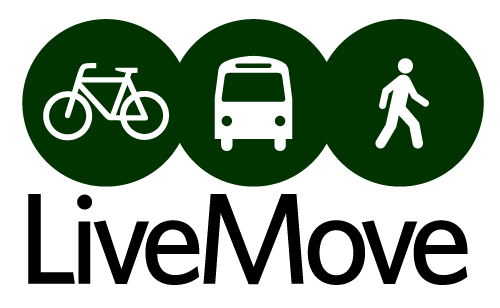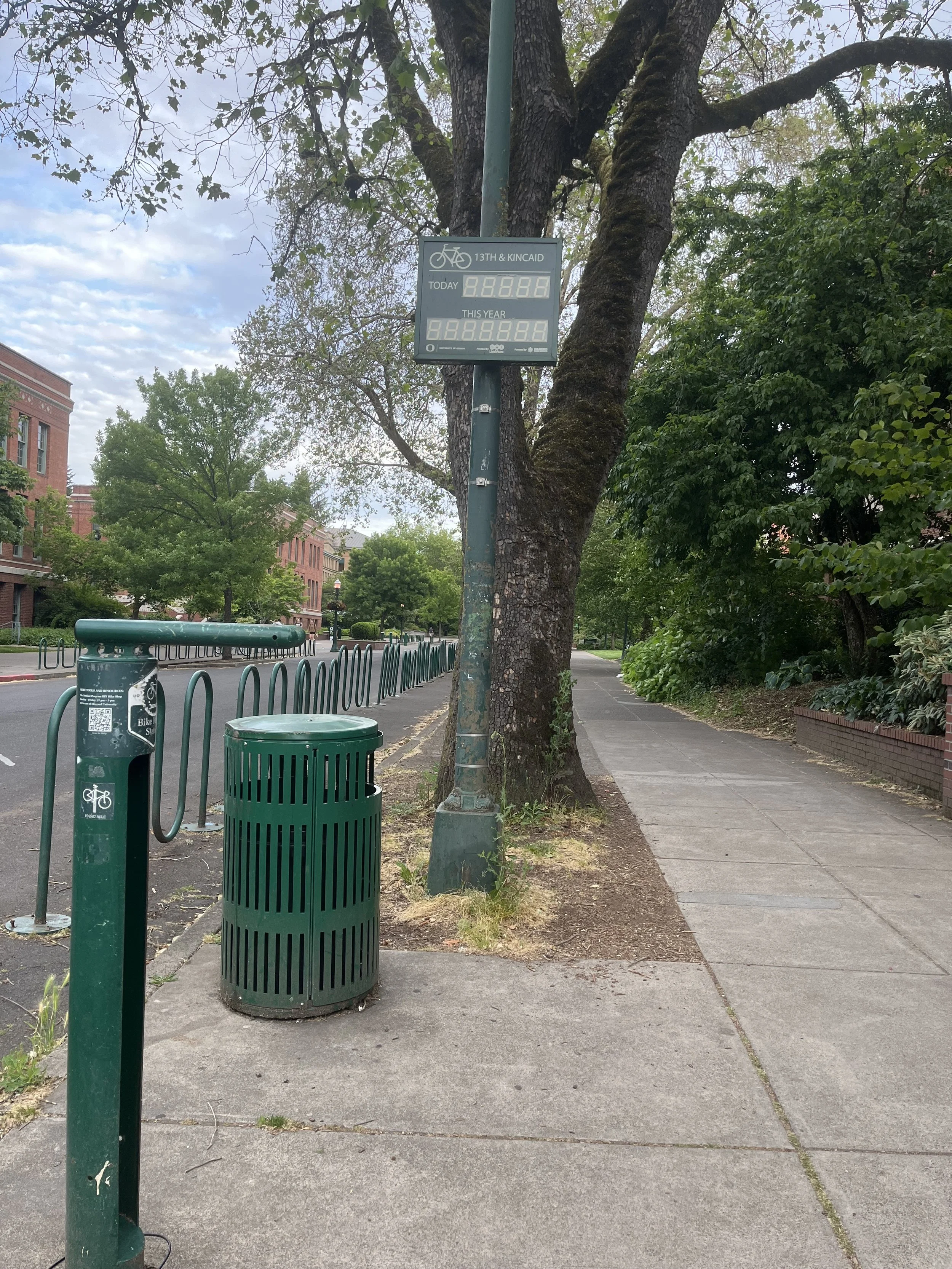UO Visual Bicycle Counter
Synopsis
LiveMove has been working for almost three years to implement a visual bike counter on the University of Oregon campus. The bike counter will be located at the entrance to the University on E. 13th Avenue at Kincaid Street and the visual display is going to be placed above University of Oregon’s League of American Bicyclists Bicycle Friendly University sign. The project will function to increase awareness for alternative modes of transportation, encourage people who bike at the UO, and ultimately promote a bike friendly campus. This project will further help reinforce UO and Eugene’s reputations as leaders in sustainability and active living with the bike counter being among the first on an American college campus!
UO Campus Planning Committee approved the project for a three-year trial and the LiveMove has planned the project using a three phased approach. Phase 1, which has been under way since May, 2015, has focused on fundraising and public awareness for the project. So far, LiveMove has raised $36,000 through partnerships, private donations, and a fundraising event with an additional $3,500 needed to complete the project. Phase 2 and 3 focus on the implementation process.
Phase 1 includes putting the loop detectors under the brick paving at 13th and Kincaid and getting the counts recording. The final step in this phase is to display the counts online. Phase 2 will be the installation of the visual display at 13th and Kincaid that will show how many bikes come through the west entrance of campus both daily and yearly. This process includes installing loop detectors as well as electrical and network infrastructure at 13th and Kincaid to count bicycles going in both east and west directions. The counting equipment and sign are being created and provided as a pilot project by Diamond Traffic Products, a local Oakridge company.
The visual bike counter will serve multiple purposes and the data collected will be available for both public and private uses. The data collected will assist Lane Council of Governments, the City of Eugene, UO professors, staff and students at the UO to better understand bicycle travel behavior. The data can help measure return on investment of bicycle facilities and identify locations for new facilities. In addition, the data will further be used to promote educational objectives, being used as a learning tool in UO’s Geography Department’s Advanced GIS courses.
Table 1: Fundraising
This table lists the sources of funding by amount.
The implemented bike counter.



